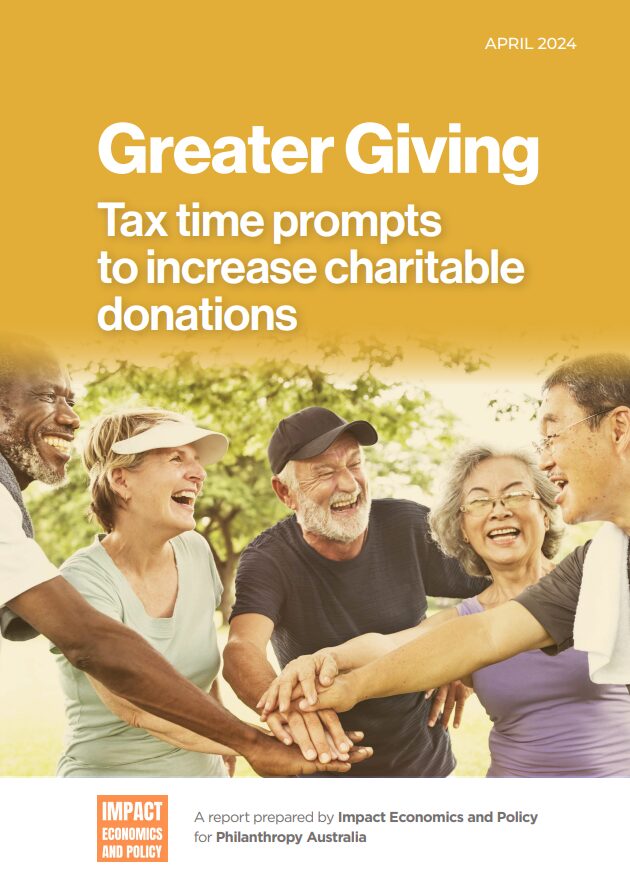Greater Giving: Tax Time Prompts to Increase Charitable Giving
Philanthropy Australia commissioned Impact Economics and Policy to develop Greater Giving: Tax Time Prompts to Increase Charitable Giving.
The essential idea of the most powerful reform option in the report (Option 3) is to offer people a voluntary choice to donate to charity during their tax return process, once they’ve seen their estimated return. There would be two questions in the tax return along the lines of: Do you wish to donate some of your estimated tax return (yes/no)? If yes, how much and to whom? The ATO would then transfer the funds directly to the nominated charity.
The reform could be transformational for Australia’s national giving because the Federal Government returns a lot of money to the Australian people as part of the tax return process – the report says $41 billion. So even if a modest proportion of people donate some of their return to charity, the amount could be very large. Impact Economics and Policy modelling indicates the reform would deliver between $5 billion and $19.5 billion in additional giving by 2029-30. In the year 2029-30, it would deliver between $1.5 and $5.7 billion (a big addition, given total giving in 2021 was $13.4 billion).
In introducing the reform, the Government would communicate that donating is entirely voluntary, and outline the purpose of the reform, to provide more funds to address Australia’s most crucial challenges, including provision of support to people in greatest need. This is particularly crucial now, as many Australians are doing it tough due to the high cost of living. Over time, there is potential for this reform to become part of the Australian fabric, a valued national custom helping to make us a more generous and giving society.
The Impact Economics and Policy results are based on conservative estimates from the behavioural economics literature, which shows giving can be spurred in several ways: prompts to give; making the process of giving simple; and drawing on “windfall gains”. Of course, if people donated in the tax return, they might be less likely to donate as much later on. The Impact Economics modelling factors this in, discounting the initial gross amounts in their calculations by 38% to account for “substitution effects”.
